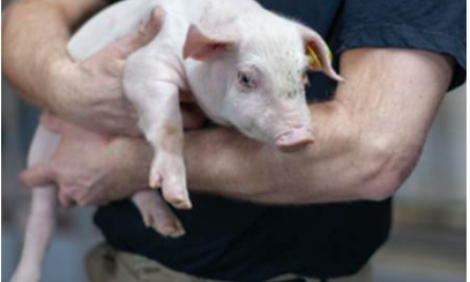



Keep It Calm in the AI Area
BPEX offers tips on the design and management of the artificial insemination area in the latest publication in its Two-Tonne Sow (2TS) campaign.

One clear message from the recent '2TS Focus on Breeding' conference was that the AI area should be both easy to use and provide a calm environment for the sows.
The following guidelines were first published in February 2009 when the BPEX team found AI facilities on many units were less than ideal.
Angela Cliff said: “On many of the units I visited, their AI protocol was to oestrus check sows in the passage way and then inseminate, which compromised both heat detection and the AI environment for the sow. Two years on, and some units have made great improvements, but many more units are yet to benefit from design changes.”
When planning the AI area, consider:
- Where it is situated: the AI area should be close to the weaned sow area/gilt service area.
- Where the boars are: do not allow constant boar contact with the weaned sows for at least 24 hours pre-oestrus detection. Ensure no chance boar contact when moving the sows to the AI area.
- How sows are moved: ensure walkways have solid sides to reduce distractions and stoppages. Hinge all gates appropriately.
- Where sows are held prior to AI: if the sows are moved in a large group, ensure that no boar contact is available to them while waiting in the holding area, to avoid standing reflexes at this point.
- How to maintain boar libido: preferably have a single active, ‘chatty’ boar or pair of boars dedicated to one insemination/detection pen; this will prevent the boar(s) from becoming distracted by the sows adjacent to them. Rotate the boars if they become fatigued.
- Size of the AI pen: depends on the number of sows to be inseminated together, preferably with one stockperson per sow. The recommended size for one or two sows is 2 metres × 2 metres.
- What happens post-AI: it is important to provide boar contact post AI. Do not stress the sows at this time. Ideally, leave them in-situ for at least 15 minutes, preferably 30 minutes. This can be done by providing four AI pens. Alternatively, provide a large holding pen adjacent to the AI area, again, with fenceline boar contact.
- How sows are returned to their pen: the design needs to reduce stress for both sows and stockpeople.
Ensure that all partitions and gates are in good working order. Protect the AI area from ‘the elements’ and provide decent lighting, a semen storage facility and an area for AI equipment.
| Protein and profits |
|---|
|
To exploit pork fully as a lean, high protein food, pig producers must use high quality feedstuffs that will not only enhance growth and health but which will also minimise environmental impact. |
Pig Meat – The Solution
The world is changing. Increasing pressure on natural resources and demand for affordable food presents challenges for farmers. The English pig industry is already working in a joined-up way towards a more sustainable industry, which delivers quality pork and pork products with lower environmental emissions, including carbon footprint.
An environmental roadmap is due to be launched early in 2011. It demonstrates how all the pieces of the pig production jigsaw are being joined together, the industry’s long-term objectives and its planned activity. Importantly, it shows that pig meat is part of the solution, not the problem and that there is a good future for the industry.
January 2011








